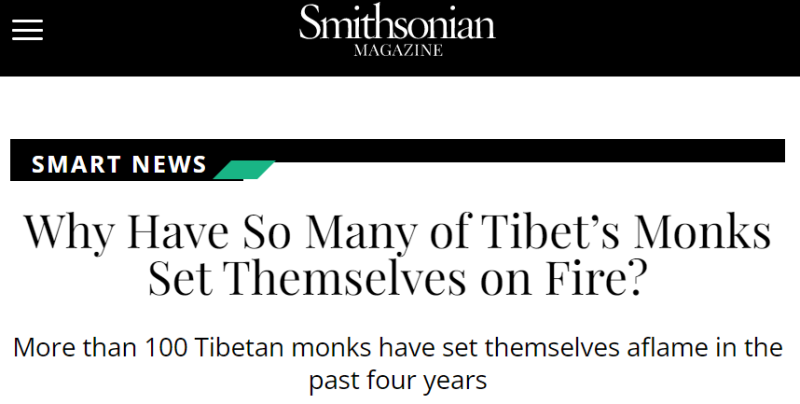An under-explored dimension of the harms inflicted via vaccine mandates is the morbidity and mortality caused by the inherent persecution levied by such mandates against those who did not wish to get vaccinated.
For someone harmed or killed by a vaccine they were coerced into accepting, the link between the mandate and subsequent injury suffered is obvious. Injuries caused by the economical or psychological trauma inflicted by vaccine mandates are not as readily apparent.
This does not make them any less real. For someone suffering the torment of vaccine mandate distresses – such as the stress of losing their only means of making a living, social ostracization, or the confusion and self-doubt from being relentlessly gaslit that they are crazy and irrational to have any doubts about the “safe and effective” vaccines – the pain and the burdens are often unbearable and devastating.
The following two case report studies put human faces on this dimension of evil public health policy carnage, and are worth exploring to convey a clear sense of the very tangible and violent abuse perpetrated by vaccine mandates.
Case Report #1

This case report describes a potentially life-threatening cardiac event suffered by a woman that her doctors attributed as most likely due to the stress caused by losing her job due to refusing to get vaccinated. The authors of this study do a fairly good job of fleshing out the link between the stress of unemployment and developing SCAD.
Firstly, the authors are (surprisingly) quite blunt and forthright describing the probable connection between the vaccine mandate-related unemployment and the myocardial infarction brought on by the SCAD.
This is atypical for pandemic literature, where anything critical of a mainstream pandemic policy is very gently worded to avoid portraying the mainstream narrative in any sort of negative light. (That merely stating scientific information in a clear and concise manner within scientific literature is a praiseworthy revolutionary act speaks volumes about the current state of institutional science.)
The following are selected excerpts (emphasis mine):
- “Spontaneous coronary artery dissection (SCAD) is an uncommon but important cause of acute myocardial infarction, particularly in younger women and in patients with underlying fibromuscular dysplasia (FMD). There is increasing literature on patients with SCAD reporting significant emotional stress, particularly stress related to unemployment, in the week prior to their cardiac event, and emotional triggers appear to be associated with worse in-hospital and follow-up cardiac events.”
- “Here, we present a case of a female presenting with an acute MI secondary to SCAD in the setting of recently learning of impending unemployment due to COVID-19 vaccine refusal.”
- “A 54-year-old female with a past medical history of hypertension and hyperlipidemia presented to the emergency department with acute-onset substernal chest pain, pressure and nausea. On interview, both before treatment and after resolution of symptoms, she reported significant emotional stress, as she had recently learned that she and several family members were facing imminent unemployment, reportedly due to COVID-19 vaccine refusal.”
- “This case highlights the importance of considering SCAD in patients with significant recent emotional stress who present with MI. Additionally, in light of the emotional stressors of the COVID-19 pandemic, clinicians must be aware of the consequences significant emotional stress plays on the development of adverse complications of chronic disease.”
- “In the patient presented here, the fact her SCAD coincided with COVID-19-related stressors, along with the substantial body of literature implicating emotional stress in the pathophysiology of SCAD, suggested that her stress may have contributed to her disease process, along with underlying risk factors such as hypertension and hyperlipidemia.”
The authors even go out of their way to point out the existence of prior evidence suggesting a connection between myocardial infarctions due to SCAD and stress, particularly stress related to unemployment:
- “Additionally, patients of all ages with MI due to SCAD are more likely (56% vs. 39%) to report emotional stress immediately preceding their event than those with MI from atherosclerotic coronary artery disease, and a majority of women with SCAD reported significant emotional stress in the week leading up to their event [2]. Therefore, women presenting with MI in the setting of recent significant emotional stress should further raise clinical suspicion of SCAD. There is also some evidence that unemployment is a stressor significantly associated with SCAD, as patients with recent unemployment-related stress suffered worse in-hospital and follow-up cardiac events compared to those with other stressors [4,5].”
- “Pandemic-related stressors, including those related to unemployment, may play an increasingly large role in overall population stress during the pandemic and may contribute to certain medical pathologies with stress-induced etiologies. Of note, there have been multiple reports of cardiac events secondary to pandemic-related stressors, including increased cases/rates of Takotsubo cardiomyopathy [13,14], and established risk factors for cardiovascular disease have increased over the course of the pandemic [15]. Though the mechanism by which severe emotional stress incites cardiac diseases including Takotsubo cardiomyopathy and SCAD has not been fully investigated, stress-induced catecholamine surges leading to coronary artery shear stress are thought to contribute significantly to the underlying pathophysiology [9]. Therefore, ongoing management of emotional stressors, especially given the prevalence of such stressors in the pandemic, may be crucial in the proper treatment of these conditions.”
The authors even highlight that the American Heart Association – which seems to be wholly comprised of fanatical vaccine cultists – emphasizes the necessity of emotional support in treating SCAD:
- “As such, treatment of her condition requires ongoing psychosocial support, including education about her condition, in addition to traditional medical interventions. The American Heart Association (AHA) emphasizes the importance of addressing mental health in the wake of a SCAD, as patients who suffer from SCAD have high rates of anxiety and depression as a result of their diagnosis [9]. Factors that may contribute to these high rates include prognostic uncertainty, risk of recurrence, lack of understanding from doctors/peers due to the rarity of the disease and a lack of understanding of the disease by the patient. Therefore, the AHA recommends ongoing psychosocial and community support to address underlying causes of anxiety in patients recovering from SCAD.”
Of course, they cannot come out and openly suggest that rescinding vaccine mandates might be warranted in order to promote patient welfare, but that is the unavoidable conclusion from their analysis. The authors come as close to the line as is possible without saying so explicitly:
- “Conclusions
Emotional stressors related to the COVID-19 pandemic may result in morbidity and mortality beyond the immediate effects of the pandemic. As illustrated by the case presented here, pathologies such as SCAD that are often induced by severe emotional stress may present more frequently during the pandemic and may often be associated with pandemic-related stressors, including unemployment. Therefore, health providers caring for patients during the pandemic should note that the distinct, difficult circumstances of the pandemic may play a significant role in inciting or exacerbating disease and should learn to recognize and inquire about such stressors when working up acute medical conditions. Furthermore, short- and long-term management of these patients should include psychosocial interventions to address the underlying causes of their emotional stressors in addition to usual medical management, particularly in conditions such as SCAD that hold a high risk of recurrence with ongoing stressors.”
Given the facts of this case, by asserting that “short- and long-term management of these patients should include psychosocial interventions to address the underlying causes of their emotional stressors in addition to usual medical management,” the authors are actually arguing that stress resulting from vaccine mandates – and in particular, unemployment – requires treatment and intervention inasmuch as the medical components of SCAD do.
There is only ONE effective intervention to treat this: rescission of vaccine mandates as a condition of employment. Obviously, bullying or forcing patients to submit to vaccination so they can retain or resume employment will only serve to exacerbate their already dangerous levels of stress on account of the vaccine mandates.
Yes, the authors also raise the specter of broadly ranging “pandemic-related” stressors. However, in light of the broadside they launched against the vaccine mandates, this ‘infraction’ is forgivable; and it also was probably necessary to include in order to get such a blunt indictment of mainstream policy published.
Case Report #2
Warning: There are extremely graphic pictures of dismembered body parts in the study discussed and linked to below, including in the PubMed abstract. Follow the links at your own peril.
“Freedom and Dignity Are Worth More than Life”: The Dramatic Suicide of an Anti-Vax Man

The second case report describes a forensic investigation of a suicide by train collision committed in order to highlight the moral travesty of vaccine mandates, that occurred in Italy, and was published in a Special Issue “Old Issues and New Challenges in Forensic and Legal Medicine”. (I couldn’t find any English-language media reports of the story, which is rather odd to say the least.)

Here’s the story, as described by the authors: (bracketed italics commentary are my additions)
On a cold January afternoon in 2022, the railway police alerted our Institute of Legal Medicine of the occurrence of a railway investment near a train station.
The authors of the present paper had been commissioned by the local law enforcement for crime scene investigation. Upon our arrival at the site, investigators told us that a man reached the railway by his bike and remained on the spot, declaring his will to kill himself. Despite people in the station shouting at him to move away, the man was eventually hit by the upcoming train travelling at a speed of about 150 km/h.
The man’s body laid across the railroad track and was extensively segmented [i.e. the train literally blew apart his body into a bunch of pieces, almost as if he’d been drawn and quartered], with the projection of blood, bone fragments, and soft tissue pieces along several hundred meters of the track itself.
The judicial authority asked for the corpse forensic examination, the pieces of which were then collected and moved from the investment site [i.e. where the collision happened] to the Institute of Legal Medicine in Bari.
The External Examination of the Corpse
Preliminarily, a careful external examination was performed. Rigor and algor mortis were affected by the widespread corpse depletion. Hypostases were not appreciable because of the complete body exsanguination [i.e. the normal physical/chemical processes which occur upon death didn’t really happen because the too much of the anatomy was missing or damaged]. The corpse showed multiple, large, and deep injuries. The edges of the wounds were well defined and bruised, and underlying muscles and organs were widely exposed or also sharply cut. Overall, two body segments were recognizable: the first segment included some neurocranium and soft tissues pieces of the face, some dental elements, the neck region, the trunk, and the arms. The second one included the pelvis and the lower limbs. Then, there was a detached right foot.
Despite the skull-brain bursting, the eyeballs were present and intact. Thus, vitreous humor samples and a fragment of liver parenchyma have been collected to perform toxicological investigations.
Then, the victim’s clothing was carefully inspected. A blister with three pills of a tranquilizer (Xanax, Alprazolam) was found as well as a plastic document holder containing a small sheet of paper with the following handwritten note: “freedom and dignity are worth more than life” (“libertà e dignità valgono più della vita”).
The brothers reported that the man lived alone, that he was psycho-physically healthy, completely autonomous, and with a fairly active social life. They added that their brother had been deeply shocked by the restrictions imposed on people not voluntarily undergoing anti-COVID-19 vaccination, and that he had refused to get vaccinated in order not to succumb to a “health dictatorship.” His choice no longer allowed him to freely live daily life, forcing him into social isolation. Relatives claimed that the victim must have only recently started taking tranquilizers, as they often saw their brother and could rule out that he was suffering from evident mental illness or had previously taken psychotropic drugs.
Toxicological Findings
Screening toxicological tests on a vitreous humor sample taken from the dead man’s eyeballs have been carried out to verify the presence of exogenous substances such as drugs or alcohol. The headspace gas chromatographic method for ethyl alcohol detection and the immunochemical method for methadone, cannabinoids, cocaine, opiates, barbiturates, benzodiazepines, amphetamines, and tricyclic antidepressants detection gave negative results. The subsequent qualitative investigation on the cadaveric blood extracted from the liver tissue samples confirmed the absence of the above-mentioned substances. Therefore, the man was not in a state of acute intoxication by exogenous substances at the time of the railway investment [i.e. he wasn’t drunk, or on drugs, when he committed suicide, meaning that the suicide was a conscious, willing and deliberate choice].
Ultimately, all circumstantial, necroscopic, and laboratory data converged on the diagnosis of suicidal death from traumatic shock secondary to railway investment [“investment” is sanitized gobbledygook academic-speak for ‘collision’].
In other words, this fellow was a completely normal and healthy individual. However, as a consequence of standing up to the covid vaccine mandates, he experienced profound intellectual or cognitive dissonance, and then social isolation.
He ultimately decided to take his own life in a gruesome manner in order to spur resistance and nullification of the vaccine mandates. He made this decision free of drugs, alcohol or other substances that can influence or muddle the clarity of one’s thoughts and perception.
Suicide as a means of resistance or political defiance is not a novel tactic, such as the Tibetan monks who deliberately chose death by fire to raise awareness of the evil Chinese subjugation and genocide of Tibet:

Study analysis of the psychological impact of vaccine mandates
Here is where this study goes off the rails. Unlike the prior case report, the authors here do not restrain themselves to scientific discourse. I suspect that facing the genuine convictions of someone willing to die to expose the blatant wickedness of their own orthodoxy left them somewhat unsettled.
People do not make a deliberate choice to commit suicide for light or transient reasons. Clearly, this person was sufficiently distressed and traumatized by the vaccine mandates and subsequent emotional stress suffered on account of the discriminatory persecution of the unvaccinated to conclude that suicide was warranted and perhaps even desired.
(It is impossible for us to definitively know to what extent the suicide was motivated by personal suffering versus a desire to raise awareness or prompt political change; regardless, it would take a considerable degree of psychological pressure or distress to push someone to the point of sacrificing his own life.)
Accurately describing the psychosocial influences of the vaccine mandates upon the decedent threatened the authors with severe cognitive dissonance. It would naturally follow that they would choose to belittle and malign all anti-vaxxers as a means of sparing themselves from having to grapple with the uncomfortable possibilities brought up by the specter of a protest suicide.
This study at times reads more like a polemic than anything scientific – scientific literature is supposed to be a droll phlegmatic disquisition constrained to the facts and analysis, not impassioned commentary on the dangers of political factions or movements. This study vacillates in a schizophrenic-like manner switching between flowery prose, biting philippic, and dense academic vernacular. Additionally, the authors unabashedly embrace the role of full-on propagandists, going full – Hotez with the anti-vaxxer bashing.
The full cult-worship is best embodied by the following declaration:
“Indeed, there is no doubt about the effectiveness of the vaccine, in addition to other infection control measures, such as surface/environment disinfection practices, hand hygiene, physical and social distancing, and the use of personal protective equipment.”
Not even *doubt* about the *effectiveness* of the covid vaccines (and the other equally delusional unicorn fairy dust voodoo interventions)….
It is unmistakably evil to afflict millions of people with economical and emotional trauma by mandating vaccines, even if vaccination would be clearly beneficial as a purely abstract scientific matter. Mandating something that confers no demonstrable medical benefit, and worse, is likely the most lethal iatrogenic intervention in human history, defies what can be captured with mere words.
Nonetheless, the establishment has relentlessly demonized and& dehumanized those who refused the covid vaccines, to this day. President Biden infamously threatened, “We are looking at a winter of severe illness and death for the unvaccinated — for themselves, their families and the hospitals they’ll soon overwhelm.”
Similarly, a Canadian study tried to insinuate that “the choice of some individuals to refuse vaccination is likely to affect the health and safety of vaccinated people in a manner disproportionate to the fraction of unvaccinated people in the population.” In other words, “Being with unvaccinated people increases COVID-19 risk for those who are vaccinated.”
The unvaccinated (and many of those who were vaccinated) rightly perceived these as genuine threats. People have a vested interest in their predictions or statements being perceived as accurate, which biases them to be less than fully honest about anything that demonstrates they were wrong. This is especially pronounced for proclamations made to the public with great fanfare, and all the more so regarding an issue of enormous practical and moral consequence.
Additionally, as a group, the ‘public health community’ regards anti-vaxxers with utter disdain and revulsion,; and even views them as enemies who mortally imperil the welfare for the entire society.

‘America’s deadly flirtation’ implies that the consequences are potentially lethal for America (and the rest of the world too).
The inevitable consequence of public denouncements of the unvaccinated is that those who made them are necessarily rooting for the unvaccinated to suffer the grim fates they had articulated, at least in part, having invested themselves and their credibility in this narrative.
Coming full circle, perhaps these case reports represent the aspired outcomes for the unvaccinated, in the minds of the myriad public health officials that opined about the impending catastrophe of unvaccinated morbidity and mortality. A chilling thought indeed, but one that is consilient with what has transpired over the course of the pandemic.
Join the conversation:

Published under a Creative Commons Attribution 4.0 International License
For reprints, please set the canonical link back to the original Brownstone Institute Article and Author.









